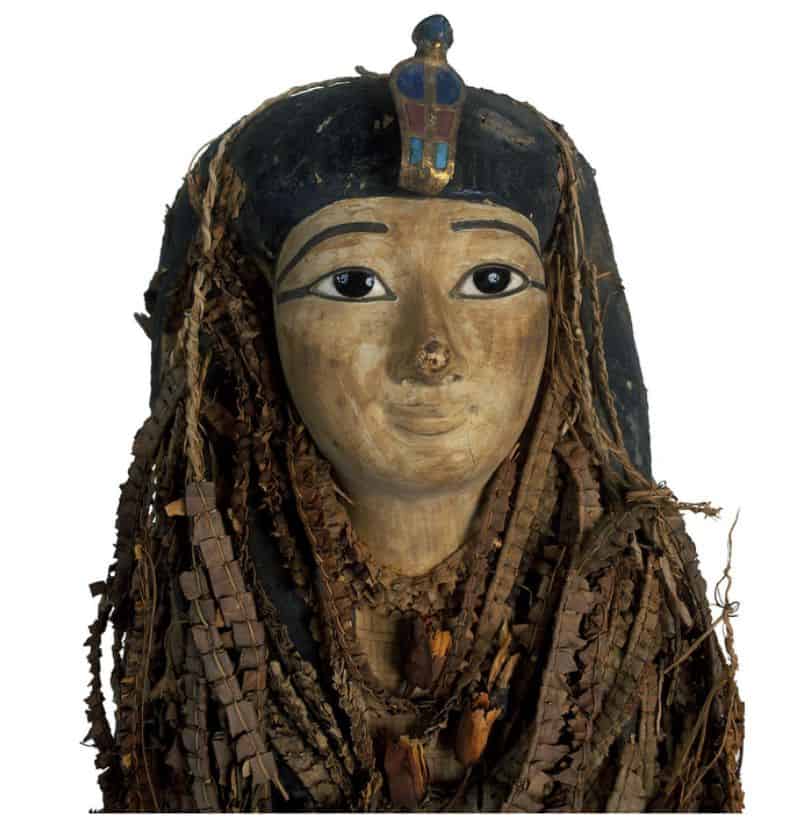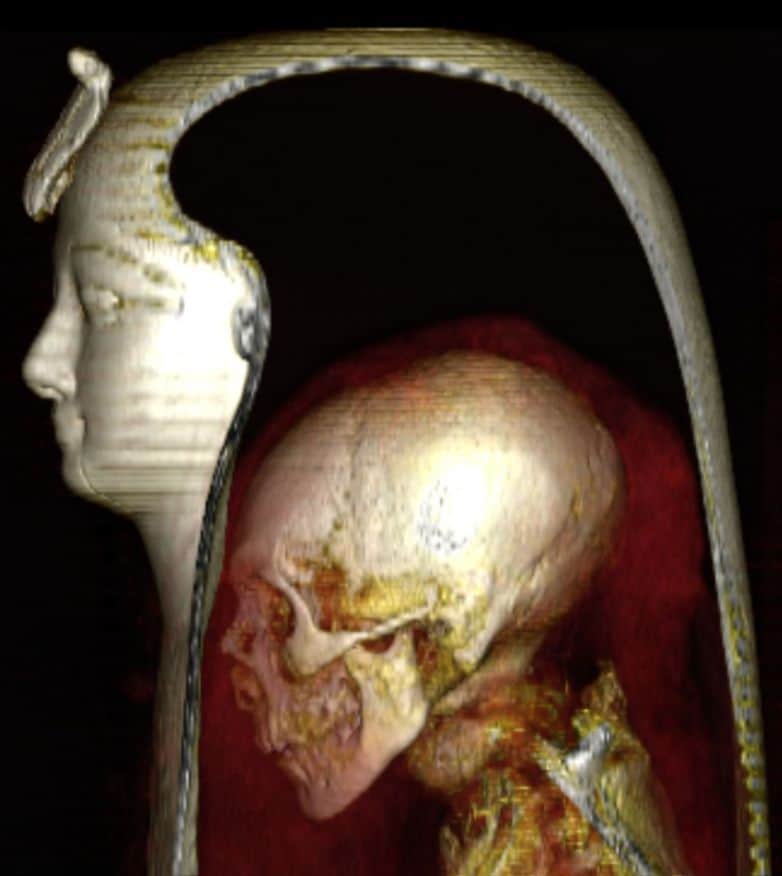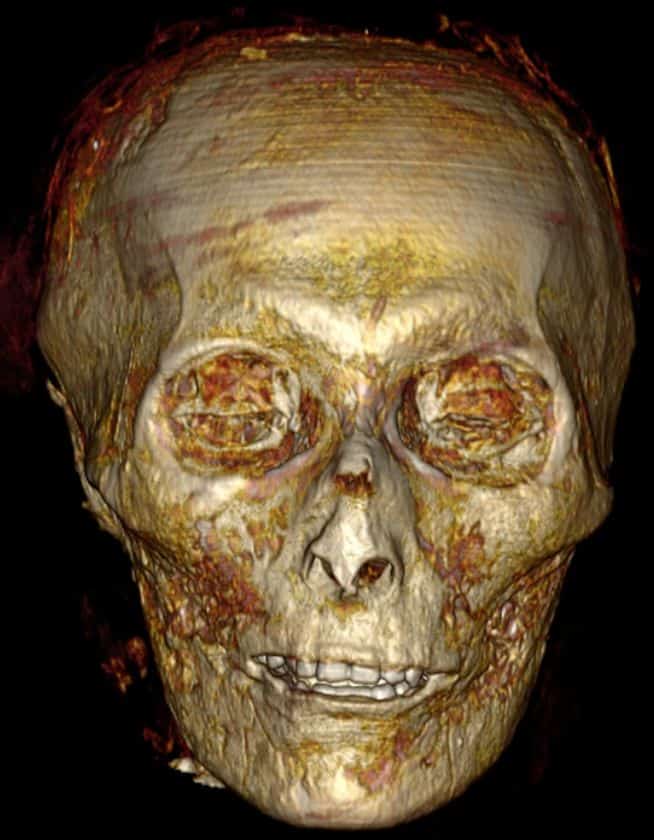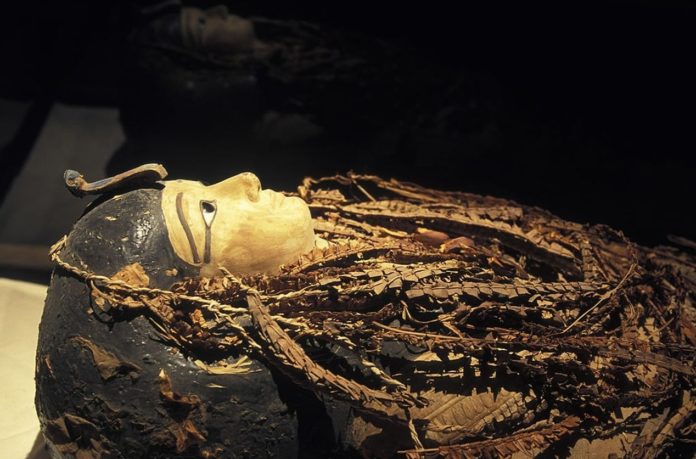What lies behind the mummy of Pharaoh Amenhotep I. Scientists digitally lift the lid.
All the royal mummies discovered in the 19th and 20th centuries have long since been opened for research.
But egyptologists have never been bold enough to lift the lid of the mummy of Pharaoh Amenhotep I.
Not because of any fabled curse, but because it is properly wrapped, attractively decked with flower garlands, and with face and neck covered by an exquisite lifelike facemask inset with bright stones.
But, for the first time, Egyptian scientists have used 3D CT (computed tomography) scanning to ‘digitally unwrap’ and analyze this royal mummy’s innards.
“This fact that Amenhotep I’s mummy had never been unwrapped in modern times gave us a unique opportunity: not just to study how he had originally been mummified and buried, but also how he had been treated and reburied twice, centuries after his death, by High Priests of Amun,” says Dr. Sahar Saleem, the study’s first author.

“By digitally unwrapping of the mummy and ‘peeling off’ its virtual layers – the facemask, the bandages, and the mummy itself – we could study this well-preserved pharaoh in unprecedented detail.
“We show that Amenhotep I was approximately 35 years old when he died. He was approximately 169cm tall, circumcized, and had good teeth. Within his wrappings, he wore 30 amulets and a unique golden girdle with gold beads.”
“Amenhotep I seems to have physically resembled his father: he had a narrow chin, a small narrow nose, curly hair, and mildly protruding upper teeth.”

“We couldn’t find any wounds or disfigurement due to disease to justify the cause of death, except numerous mutiliations post mortem, presumably by grave robbers after his first burial. His entrails had been removed by the first mummifiers, but not his brain or heart,” the professor adds.
The mummy of Amenhotep I (whose name means “Amun is satisfied”), along with other reburied royal mummies, was discovered in 1881 at the archeological site Deir el Bahari in southern Egypt. Amenhotep, the second pharaoh of Egypt’s 18th dynasty (after his father Ahmose I, who had expelled the invading Hyksos and unified Egypt), ruled from around 1525 to 1504 BCE. Egypt was affluent and safe throughout his reign, and the pharaoh authorized a religious building frenzy as well as successful military excursions to Libya and northern Sudan. He and his mother, Ahmose-Nefertari, were worshiped as gods after his death.
Sahar Saleem and her co-author, egyptologist Dr Zahi Hawass, previously hypothesized that the principal goal of the 11th century restorers was to repurpose royal burial goods for following pharaohs. However, in this case, they refute their own theory.

“We show that at least for Amenhotep I, the priests of the 21st dynasty lovingly repaired the injuries inflicted by the tomb robbers, restored his mummy to its former glory, and preserved the magnificent jewelry and amulets in place,” adds Saleem.
Hawass and Saleem researched more than 40 New Kingdom royal mummies as part of the Egyptian Antiquity Ministry Project, which began in 2005. Twenty-two royal mummies, including that of Amenhotep I, were moved to a new museum in Cairo in April 2021. The spectactular ‘Royal Golden Mummy Parade’ on March 3rd, 2021 in Cairo included the face of Amenhotep I’s mummy with its mask.
“We show that CT imaging can be profitably used in anthropological and archeological studies on mummies, including those from other civilizations, for example Peru,” concludes Saleem and Hawass.
Source: 10.3389/fmed.2021.778498
Image Credit: S. SALEEM AND Z. HAWASS
You were reading: Egyptologists ‘digitally unwrap’ 21st dynasty ‘lovingly restored’ mummy’ avoiding mythical curse
